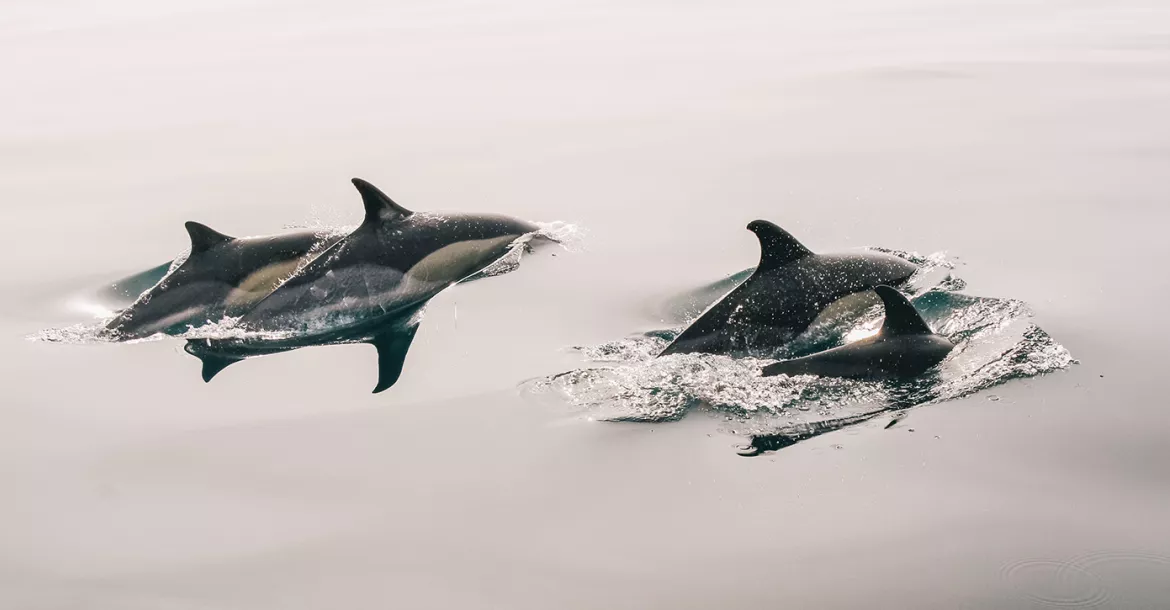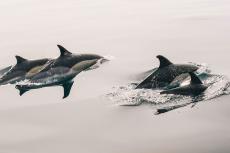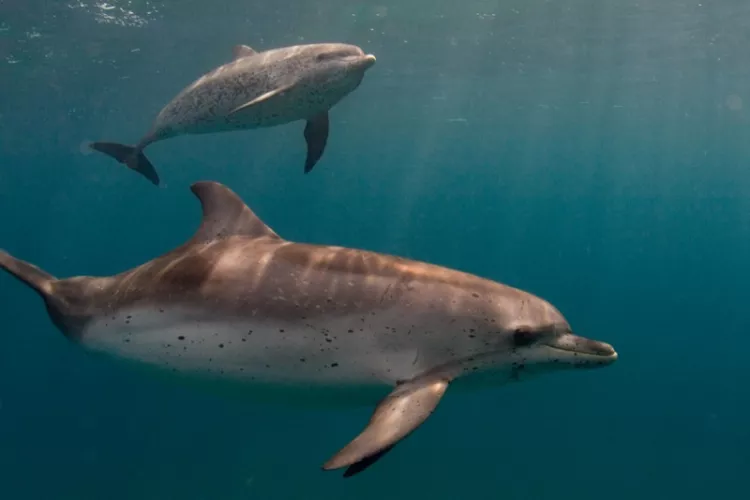Why aren’t dolphins getting bent?
It appears that by reducing their heart rates, dolphins avoid the typical decompression sickness that afflicts human divers.
Marine mammals are not above the physical principles and processes that lead to bubble formation in tissues following decompression. Scientists once thought that diving marine mammals were immune from decompression sickness, but beached whales have been found to have gas bubbles in their tissues—a sign of the bends. In any case, how some marine mammals and turtles can repeatedly dive as deep and as long as they do has perplexed scientists for a very long time.
Then, in 2018, researchers at the Woods Hole Oceanographic Institution (WHOI), found that a key difference that sets marine mammals apart from other mammals, including humans, is the unusual lung architecture of whales, dolphins and porpoises (and possibly other breath-holding diving vertebrates), which creates two different pulmonary regions under deep-sea pressure.
When air-breathing mammals dive to high-pressure depths, their chest structure allows their lungs to compress. Cartilaginous reinforcements also help to maintain airway permeability (no gas trapping) during compression and provide an air storage site in a non-gas-exchange compartment when lung parenchyma collapses at depth. Scientists have assumed that this passive compression was marine mammals’ main adaptation to avoid taking up excessive nitrogen at depth and getting the bends. However, the extent of compression of the tracheobronchial tree on different species is still debated.
By studying CT images taken in a hyperbaric chamber, the researchers discovered that marine mammals’ lung architecture creates two pulmonary regions: one air-filled and the other collapsed—and that blood flows mainly through the collapsed region of the lungs. This mechanism allows some oxygen and carbon dioxide to be absorbed by the animal’s bloodstream, while minimizing or preventing the exchange of nitrogen, thus minimizing the risk of the bends. The actual degree of pulmonary shunt has been determined for some pinniped species but not in cetaceans.
Furthermore, a new study published in November 2020 indicated that dolphins can reduce the risk of decompression sickness by reducing their heart rates. The mammals seem to be able to adjust their heart rates to the kind of dive they are about to do. The so-called “dive response” is supposed to be a reflex but in dolphins it is not merely a reflex, but an active response. The animals can decide to what extent they change the heart rate during a dive.
What is not clear is whether dolphins are conscious of responding in this way on a cognitive level.
- Log in to post comments






























